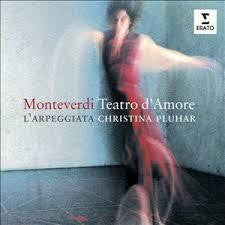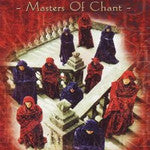BAROQUE - Early opera and instrumental music
BAROQUE - Early opera and instrumental music
This week we were focussed on two greats of the Baroque era: MONTEVERDI and J.S. BACH... here are a couple of youtube performances of the pieces we covered...
CLAUDIO MONTEVERDI: L'Orfeo (1607)
The drama: In a prologue the figure of Music introduces the piece, a demonstration of the power of music. Orpheus and Eurydice are at last to marry, an event celebrated in dance and song by the shepherd company. The second act continues the celebration of the happiness of Orpheus, interrupted by the appearance of the messenger Sylvia, who breaks the news of the death of Eurydice, before leaving to shun human company, marked by the bad news she has brought. Orpheus, accompanied by Hope, sets out for the Underworld. She leaves him as he approaches the Styx, eventually overpowering the boatman of the dead, Charon, with his music, and crossing the river. In the kingdom of Pluto, Proserpina pleads with her husband for the release of Eurydice, and she is allowed to leave, following Orpheus, provided that he does not look round. As he walks away, doubts assail him and he looks round, only to lose Eurydice, who must now remain in the Underworld. The act finds Orpheus alone in the fields of Thrace, comforted by Echo. In the published libretto and, presumably, in the first performance in the palace of the Duke of Mantua, Orpheus is then set upon by Bacchantes, who tear him in pieces. In Monteverdi's score this is replaced by a final apotheosis, when Apollo appears as a deus ex machina, descending on a cloud machine to raise Orpheus to the stars, whence he can eternally gaze on the image of Eurydice in the sun and stars.
(Naxos.com - education synopsis)
In this early opera we can see emotion injected into the musical drama, tonality (major and minor keys) are used to portray different emotional contexts, and this is particularly noticeable as the messenger Sylvia makes her entrance (approx. 31:33) the major key monody sung by the shepherd changes to a minor key recitative (speech-like song) sung by Sylvia. There is also a shift in instrumental accompaniment that further underpins and highlights the emotional drama: the shepherd's song is accompanied by harpsichord, while Sylvia's recitative is accompanied by theorbo and organ. The tempo of her recitative is noticeably slower and this music clearly communicates grief for Eurydice and the gravity of her message. Note the constant shift in tone from the messenger back to the shepherds in the following few minutes. The shift back to a major key in the shepherd's monody portrays musically that the shepherds do not quite understand, the initial shock of grave news is almost unbelievable, and takes some time to sink in.
Here is the entire youtube clip for Act II of L'Orfeo:
https://www.youtube.com/watch?v=0mD16EVxNOM
Enjoy this piece and see what other interesting things you can pick up yourself!
JOHANN SEBASTIAN BACH: Brandenburg Concerto No. 5 (probably written in 1719)
Wow I love this piece, no matter how many times I hear it. This instrumental music comes under the genre concerto grosso. A concerto grosso has a group of soloists rather than just one soloist. This soloist group known as a concertino, alternates performing music with the whole orchestra - ripieno. The concertino in the Brandenburg concerto is made up of a flute, violin and (very unsusually!!!!) a harpsichord. The form of this piece is ritornello form. In essence a ritornello is a returning instrumental passage (played by the orchestra) that alternates with episodes - played by the soloist group. The following diagram expresses the structure of ritornello form:
R --- E --- R --- E --- R --- E --- R --- E etc...
When listening, see if you can hear the similarities in the ritornello passages though they may be performed in keys other than the original key of the first ritornello passage)....
https://www.youtube.com/watch?v=BnjqGhAlFzs
Also as you listen note how the harpsichord begins playing a basso continuo accompaniment that gradually becomes more and more complex until (at around 6:30) the harpsichord is the only solo performer and this harpsichord cadenza (written out or improvised ornamental passage - in this case written out but may be mistaken for improvised) lasts for many minutes. So, not only is it unusual for harpsichord to be used as a solo instrument at this time, but the way in which the harpsichord is used in this work is outside of the normal basso continuo role expected for harpsichord. I could write a whole lot more about this and other pieces we have looked at, however as usual the music speaks for itself!
Enjoy these or if you are still hanging out for some more, we also looked at the following pieces, find them on youtube:
ARCHANGELO CORELLI, Trio Sonata Op. 3, No. 2
GUILO CACCINI, Vedro 'l mio sol
LOVE BAROQUE MUSIC???
Check out this stock we currently have in store:


J.S. Bach: Brandenburg Concertos
More J.S. BACH products instore
Or let us know if you are looking for a specific piece by any of these composers and we can order it in for you!
Happy listening!
Chants & the MEDIEVAL era
Kia'ora! Welcome!
I am sure that you will all agree that a quick look at the variety of western art music available, reinforces that there is no way a survey of music from the Medieval era to the 20th century can cover the great works of so many composers and the variety of styles that have existed through these ages. Taking this into consideration, the idea of mirroring the study of Musi102 students at the University of Otago, gives us a starting point to delve into some spectacular works and hopefully bring some smiles to the faces of western art music lovers. I rather like the following writings of Richard Taruskin (Oxford History of Western Music) "Inclusion and omission imply no judgment of value here." If you so wish, join me on this little journey through the ages and listen with openness and you may find that you enjoy yourself! It is impossible to cover everything that we talk about in Musi102, consequently, each week I will point out a few things that I think you may find interesting.
This week we will start with a quick look at some stunning work from the the medieval era (for the purposes of this study the 'middle ages' 950 - 1440AD).
Well where do we start? Perhaps the best idea is to consider how music from 1000 years ago (!!!) survived to be reproduced into the 21st century and 2014...extraordinary isn't it?... One of the most important technologies invented, that many musicians still rely on today, is notation. Around the 900's neumes or neumatic notation began to be used as memory aids for vocal chant recitation. These memory aids eventually helped to standardise music of the church.
So was all medieval vocal music sacred? No, hardly... however the recording of this music via neumes helps us today to have some idea of what sacred music sounded like so long ago. As the Roman church had reason to standardise music, neumatic notation was used. From our point of view this is fabulous, as this has left us with some idea of what sounds were important in sacred vocal music of the time, and what styles were utilised.
For example: plainchant (chants) commonly used monophony (single melodies), and polyphony (multiple melody lines).
Polyphony might be thought of as waves of melodic lines against each other. I like to think of them like this pretty picture:

(Image sourced from google images)
Polyphonic music had it's beginnings in monasteries. Gregorian chant is a type of plainchant.
Here is an example of a monophonic (single melody) plainchant from the late medieval era.
http://www.youtube.com/watch?v=2HEKhr002Ts
Listen to this example of organum (an early type of polyphonic music based on plainsong with an accompaniment sung below or above the melody)... how does it contrast? What do you hear?
http://www.youtube.com/watch?v=Gq5B3M4jRtQ
Of particular interest is that Leonin - the composer of this second example - is one of the earliest known composers of polyphonic organum, and he worked at Notre Dame in Paris. As Taruskin points out, the work of the musicians at Notre Dame was important in standardising music across greater territories:
"The musicians of Notre Dame symbolized the strong, united church they served, and promoted catholicism in the literal and original sense of the word. As we know from the dispersion of their works in the extant sources, their program was successful. The central Parisian repertory was copied far and wide and sung well beyond its home territory." (Richard Taruskin,The Oxford History of Western Music: Chapter 6 Notre Dame de Paris).
So there is a little taster of medieval sacred vocal music to begin with... If you are interested in checking out some other music related to this time, here are a few items that we have instore that you may enjoy:

http://relicsmusic.co.nz/products/buranacarmina-orffandoriginalmedievalnew

http://relicsmusic.co.nz/products/cantogregorianogregorianchants2cdsnew

http://relicsmusic.co.nz/products/mastersofchantgregorianchantsdvdnew
See you next week!
So... every now and then I do a little bit of tutoring at the University of Otago. This week tutorial classes began for Music students studying Musi102 - Music in Western Culture. I love this paper - a mix of historical context, a lot of listening and reading from the Medieval period through to the 20th Century. It is a quick dance through the centuries that gets my imagination flying and always leaves me in awe of the many great composers that have graced this earth. So in the midst of some pretty interesting lectures this week, I got to thinking, how about we do a blog that mirrors the adventure these students go on?
Long story short if you love CLASSICAL music then this blog could be something you might enjoy. Every week I will post music by the composers these students are studying, along with little tidbits of interesting info about the composers as we travel through the ages.








